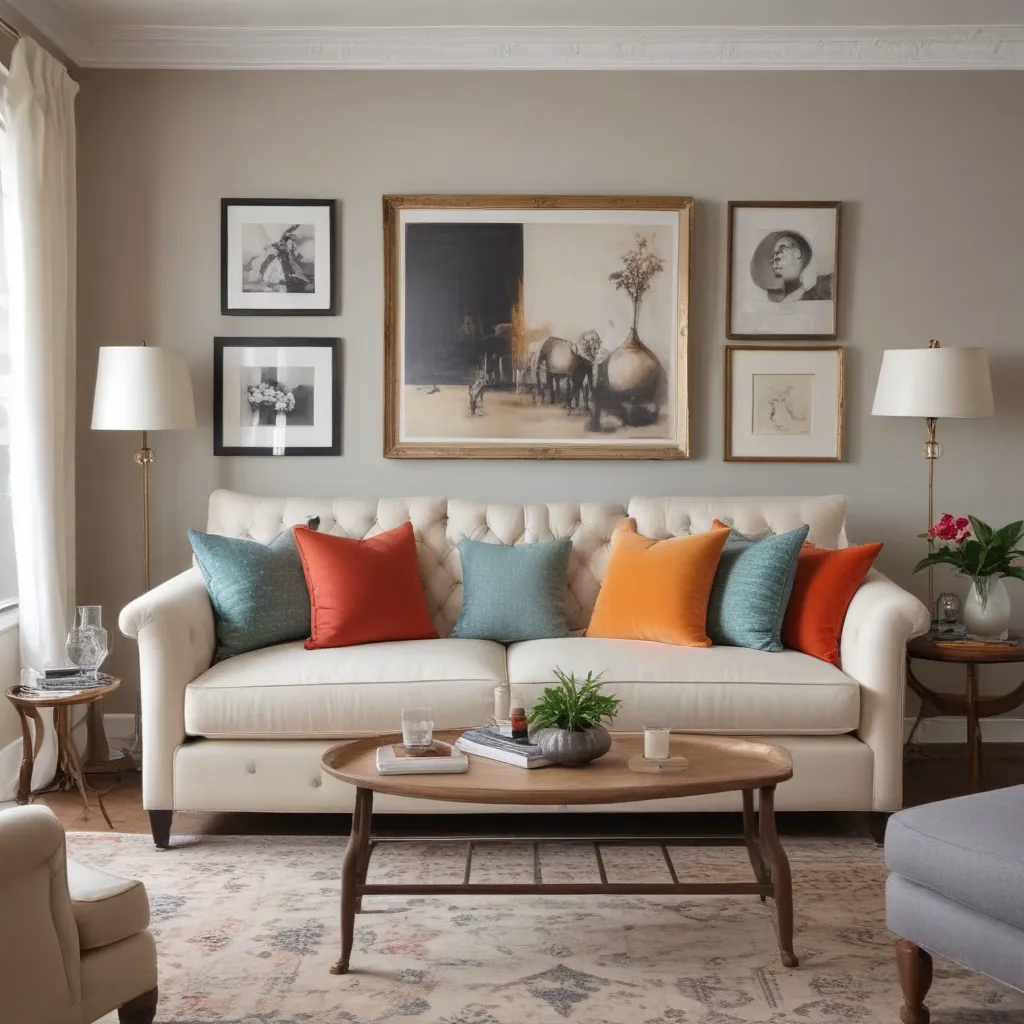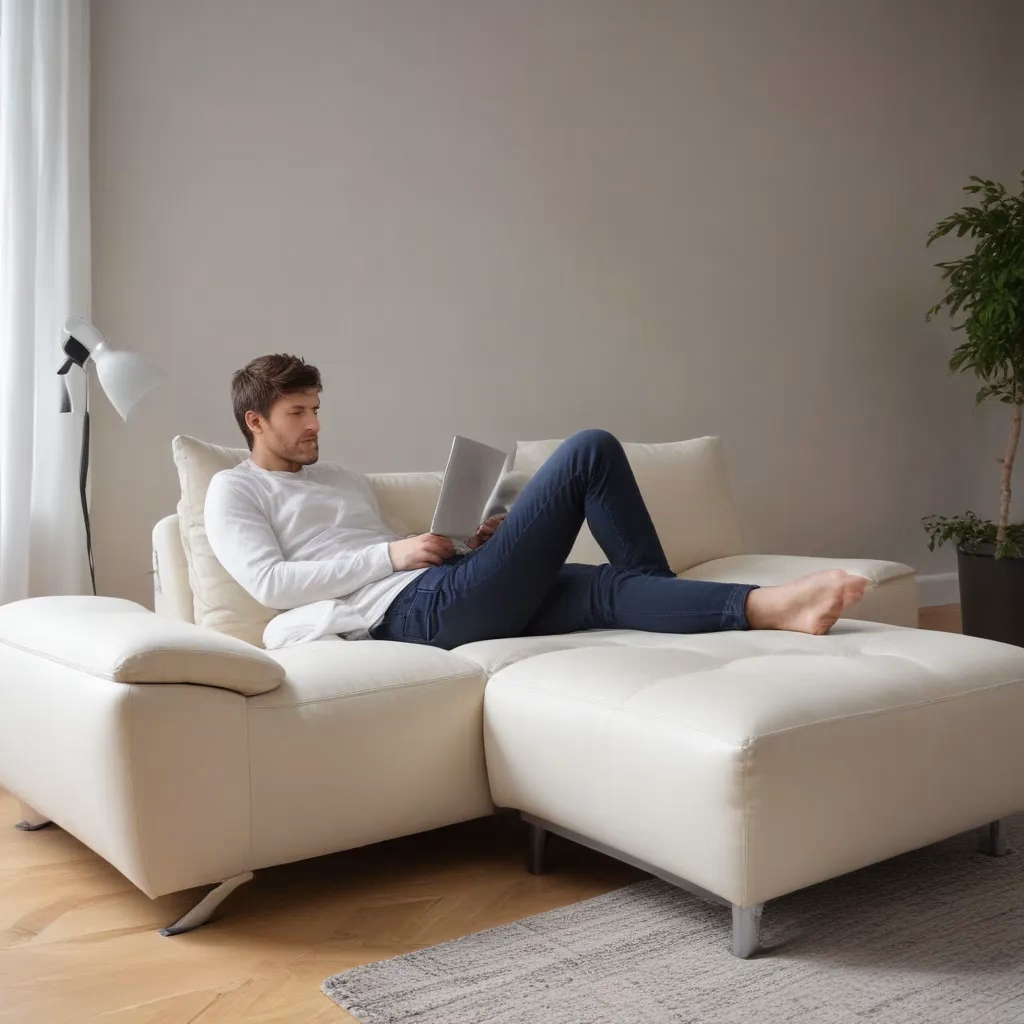
When it comes to furnishing a living space, the sofa is undoubtedly the centerpiece—the anchor that ties the entire room together. We learned this the hard way… As an experienced furniture consultant and interior design writer, I’ve learned that selecting the right sofa size is crucial for creating a cohesive and functional living area.
At SofaSpectacular.co.uk, we understand that choosing the ideal sofa can be a daunting task, with so many factors to consider. From material and style to dimensions and layout, the options can feel overwhelming. That’s why I’ve compiled this comprehensive guide to walk you through the key considerations for selecting the perfect sofa size for your home.
Sofa Selection Factors
Dimensions and Space Planning
The first and most crucial factor to consider when choosing a sofa is the dimensions of your living space. Measure the room carefully, taking note of the length, width, and even the ceiling height. This will help you determine the maximum size sofa that can comfortably fit without overwhelming the area.
As a general rule of thumb, aim for a sofa that’s about two-thirds the length of the wall it will be placed against. This creates a balanced, proportional look without the sofa feeling too large or too small. Homes & Gardens suggests that standard sofa sizes are typically around 72, 84, or 96 inches (UK equivalents of 175, 210, and 240cm), so two-thirds of your wall length may fall between these standard sizes.
It’s also important to consider the depth of the sofa, not just the length. A sofa with a depth of 40 inches (around 101cm) may feel overly imposing in a smaller room, even if the length is proportional. In this case, consider a more upright, traditional style rather than a deep, modern silhouette.
Another essential factor is how the room will be used. For a cozy TV or movie room, a large, squishy corner sofa or sectional may be ideal. But for a more formal living space used primarily for entertaining, two facing sofas may be a better choice to encourage conversation. Sectional sofas also work well as room dividers in open-plan layouts.
Upholstery Fabric and Materials
The material and upholstery of your sofa can greatly impact its visual weight and perceived size. Lighter, more delicate fabrics like linen or cotton can create the illusion of a smaller, more airy piece, while heavier textiles like velvet or leather may make a sofa feel larger and more substantial.
Pay close attention to the color as well. Darker, richer hues like navy or forest green can make a sofa feel more grounding and anchored, while pale neutrals like gray or beige can feel lighter and more expansive.
Sofa Styles and Design Features
The specific style and design features of a sofa can also affect its perceived size. Sofas with lower, more streamlined profiles tend to feel less imposing than those with tall, tufted backs. Similarly, angular, boxy silhouettes may appear larger than curved, more organic shapes.
Consider the arms as well—bulky, oversized arms can make a sofa feel heavier, while slim, tapered arms create a more delicate, lightweight impression. And don’t forget about the legs; exposed, angled legs can visually “lift” a sofa, preventing it from feeling too grounded.
Upholstery Care and Maintenance
Once you’ve selected the perfect sofa size and style for your living space, it’s essential to prioritize proper care and maintenance to keep it looking its best for years to come.
Cleaning and Stain Removal
Regular vacuuming and gentle spot-cleaning are crucial for preserving the condition of your sofa’s upholstery. Be mindful of the fabric type and follow the manufacturer’s instructions for safe cleaning methods.
For spills or stains, act quickly and blot the affected area gently with a clean, dry cloth. Avoid scrubbing, as this can damage the fabric. Consult your sofa’s care guide or reach out to the manufacturer for guidance on more stubborn stains.
Fabric Protection and Preservation
Protect your sofa’s upholstery by keeping it out of direct sunlight, which can cause fading over time. Consider using a fabric protector or conditioner to help repel stains and maintain the material’s softness and luster.
For loose-cover sofas, regularly washing the covers according to the manufacturer’s recommendations can extend their lifespan and allow you to switch up the look of your living space.
Repair and Restoration
Despite your best efforts, wear and tear is inevitable over time. If your sofa’s upholstery becomes significantly damaged or worn, consult a professional upholsterer for repair or restoration services. This can breathe new life into your investment and double-check that your sofa continues to serve you well.
Living Room Furniture Layout
Once you’ve selected the perfect sofa, it’s time to consider how it will fit into your living room layout. Proper planning and placement are key to creating a functional, visually appealing space.
Room Measurements and Proportions
Start by carefully measuring your living room, taking note of the dimensions, furniture placement, and any architectural features like fireplaces, windows, or built-ins. This will help you determine the optimal size and position for your sofa within the space.
As a general guideline, leave at least 18 inches of clearance on either side of the sofa to allow for easy movement and access. Additionally, double-check that there’s enough space in front of the sofa for a coffee table or ottoman without creating a cluttered, crowded feel.
Arrangement and Traffic Flow
Consider the flow of traffic through the room and how people will move around the sofa. Avoid placing the sofa in a way that blocks doorways, windows, or the primary paths of movement.
For open-plan layouts, a sectional sofa can be an excellent choice, as it helps define the living area while still allowing for a seamless transition to other zones. Alternatively, two facing sofas can create an intimate, conversational seating arrangement.
Complementary Decor Elements
Remember that the sofa is just one piece of the puzzle when it comes to your living room design. Carefully select complementary furniture, lighting, and accessories to create a cohesive, visually harmonious space.
For example, pairing your sofa with appropriately scaled side tables, floor lamps, and accent chairs can help balance the room’s proportions. And don’t forget about the importance of textiles, like throw pillows and blankets, to add layers of comfort and personality.
Styling for Comfort and Aesthetics
Ultimately, the ideal sofa isn’t just a visually stunning piece—it should also provide unparalleled comfort and support. After all, this is where you and your guests will spend countless hours relaxing, entertaining, and creating lasting memories.
Cushion Comfort and Support
Pay close attention to the sofa’s cushion construction and materials. Look for high-quality foam or a blend of foam and feathers for optimal comfort and durability. Avoid sofas with overly firm, unyielding cushions, as these can become uncomfortable over time.
Additionally, consider the cushion style—fixed or loose-back cushions, for instance—and how they’ll affect the overall look and feel of the sofa.
Accessorizing and Personalization
Once you’ve found the perfect sofa, don’t be afraid to get creative with accessorizing and personalization. Throw pillows, cozy blankets, and even carefully curated artwork or décor can help transform your sofa into a true reflection of your personal style.
Remember that the sofa is the centerpiece of your living room, so take the time to style it in a way that makes you feel happy, relaxed, and at home.
Lighting and Ambiance
Proper lighting can also play a significant role in how your sofa is perceived within the space. Strategically placed floor lamps, table lamps, or even a statement overhead fixture can help set the desired mood and highlight the sofa’s best features.
By considering all of these key factors—from dimensions and materials to layout and styling—you’ll be well on your way to finding the ideal sofa size for your living room at SofaSpectacular.co.uk. Happy shopping!
Example: Living Room Makeover Series with Modular Sectionals



